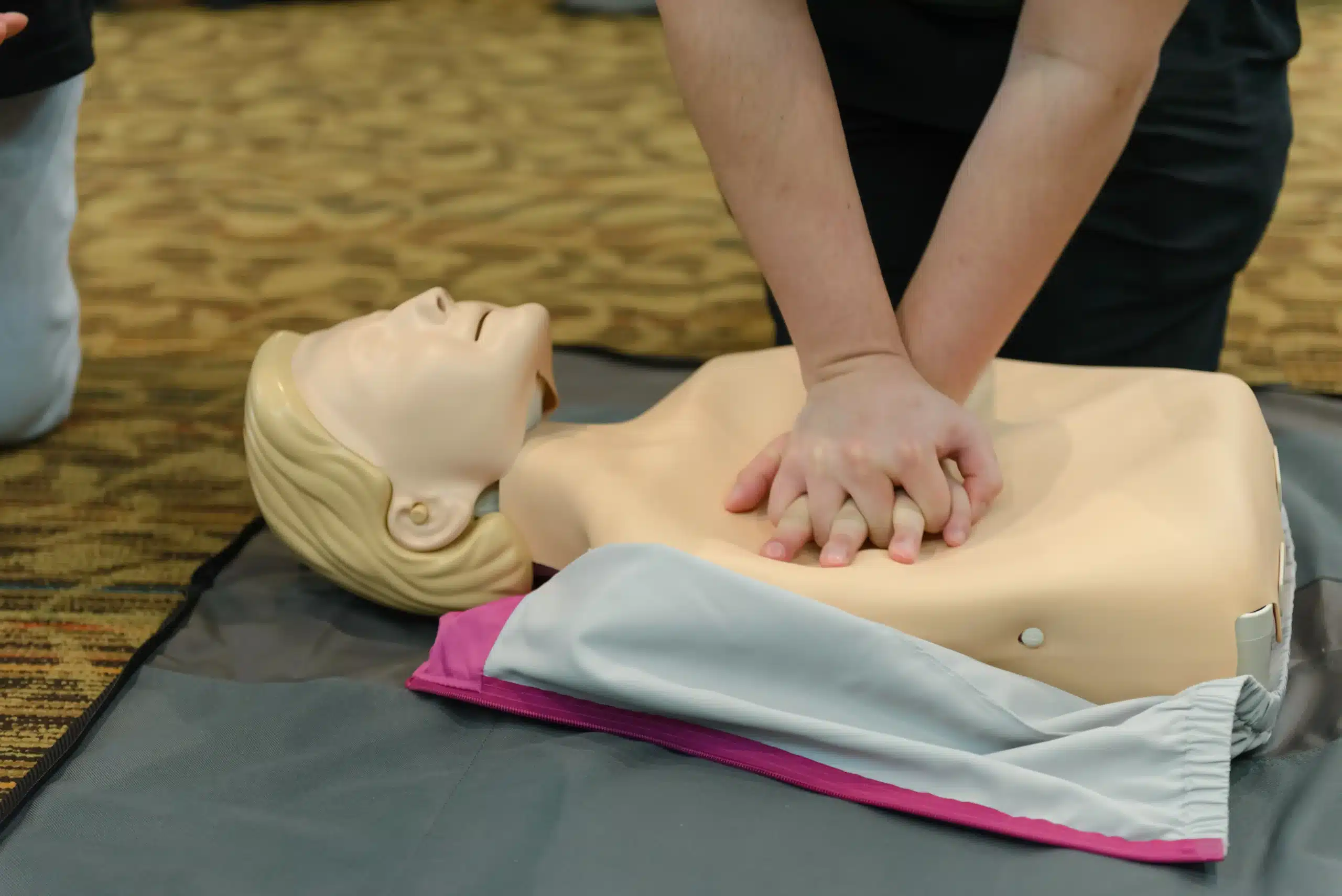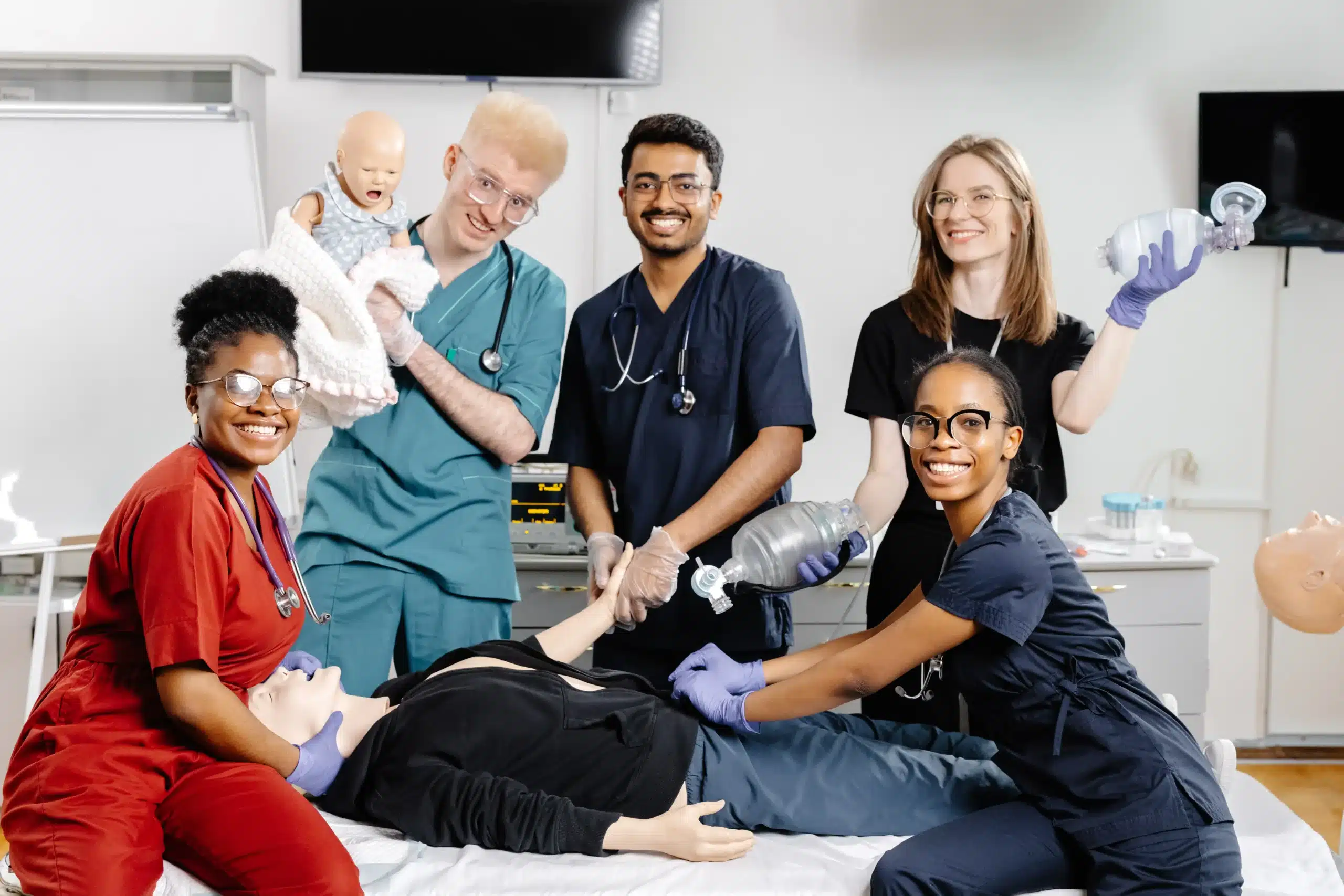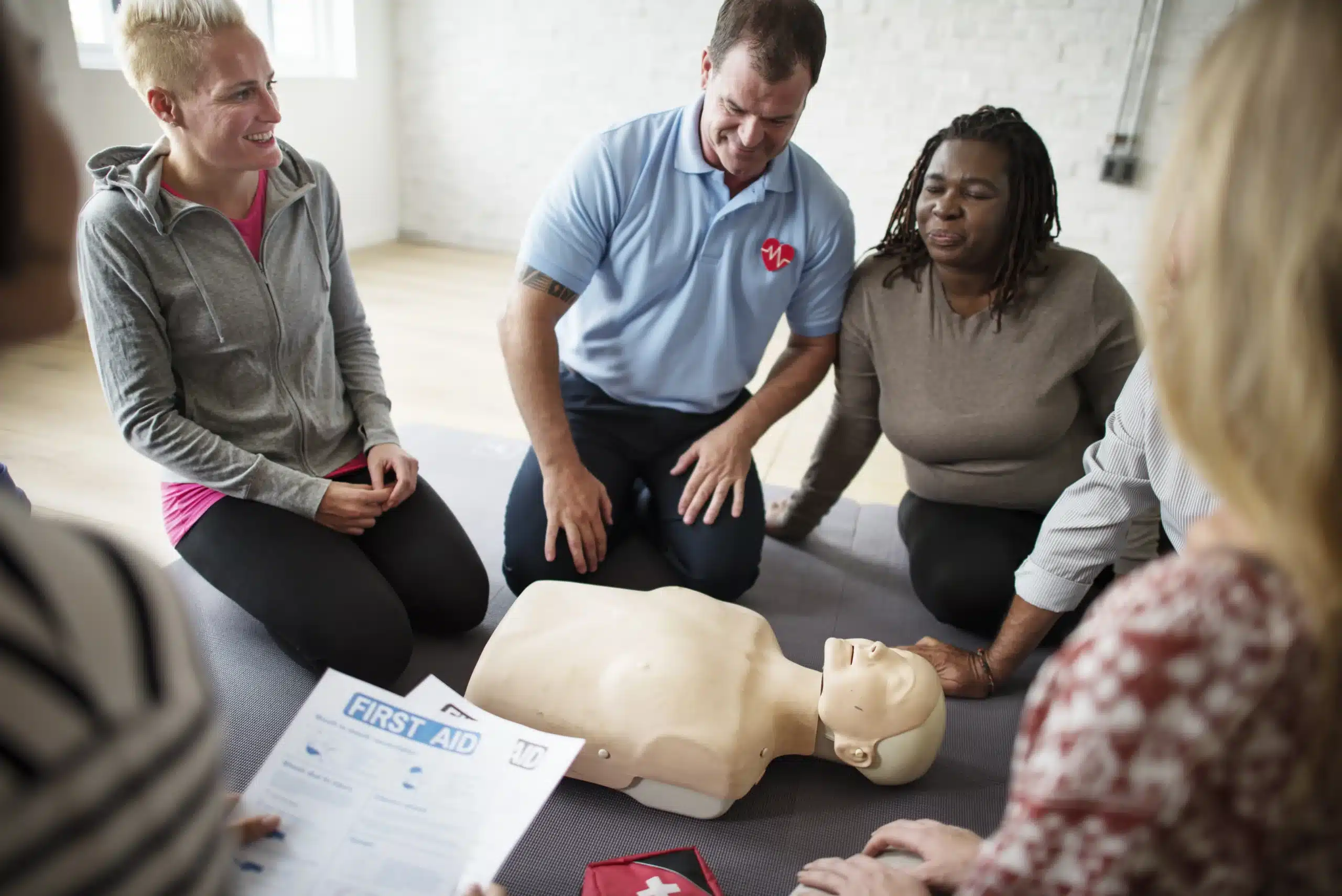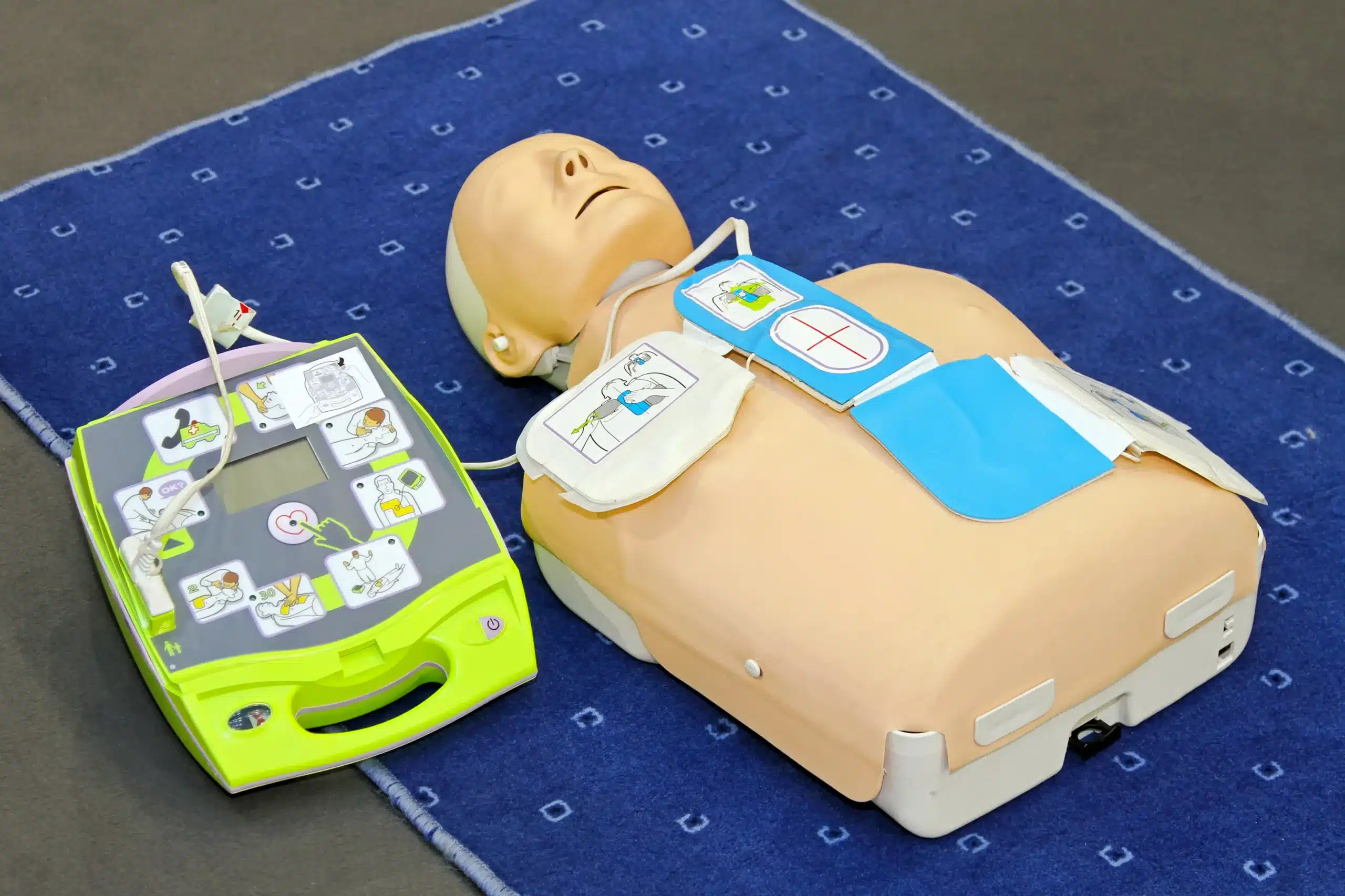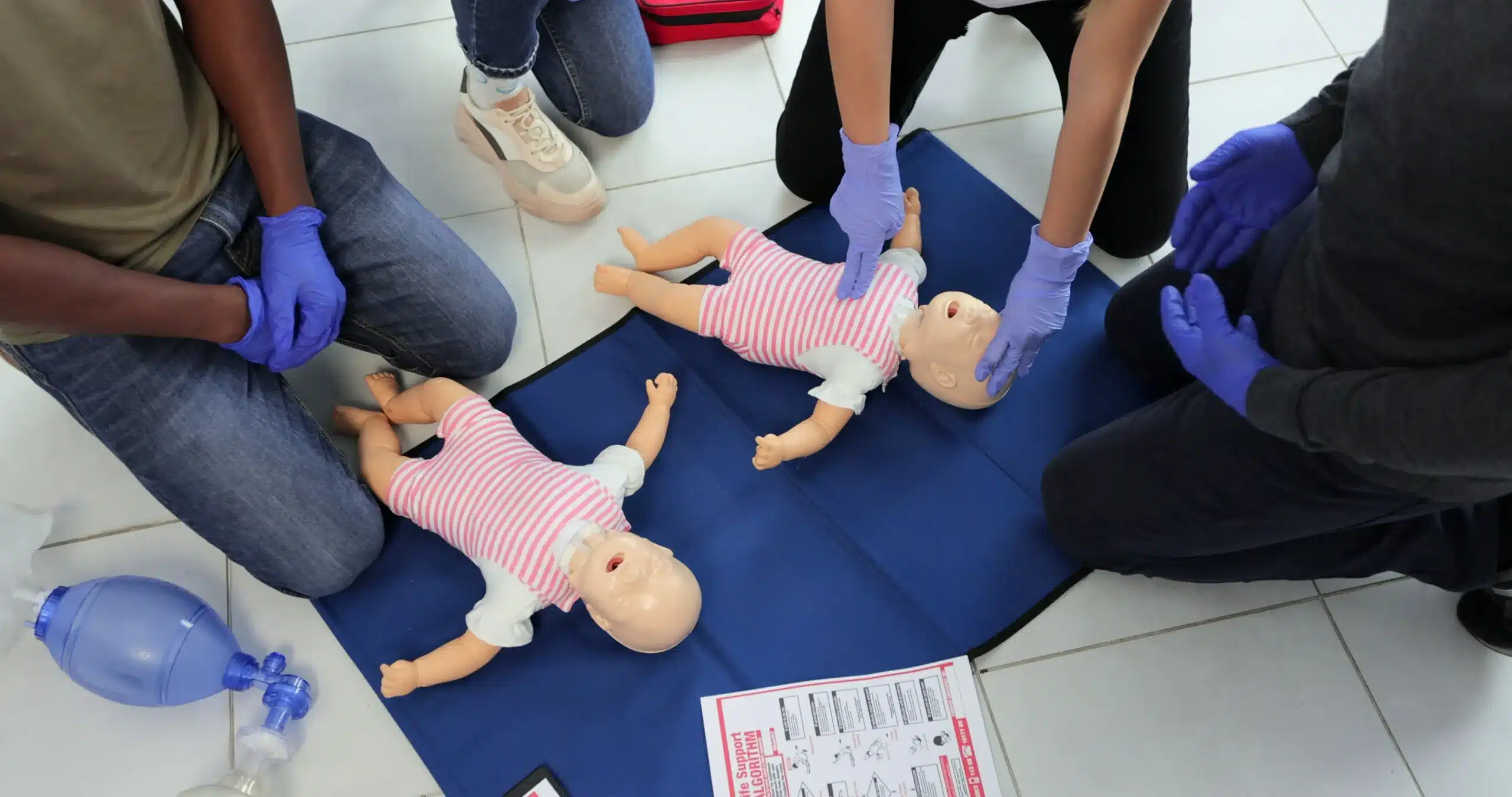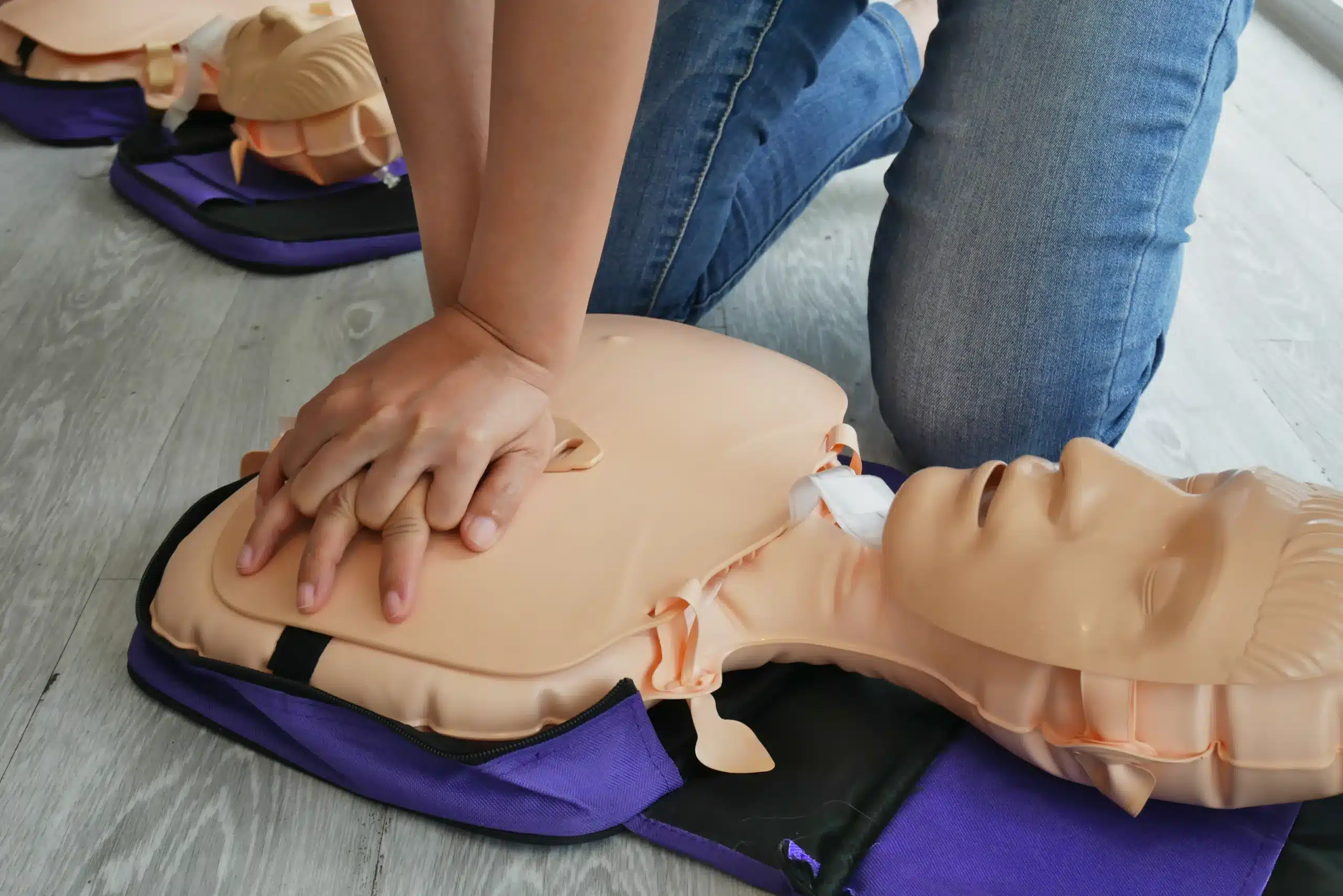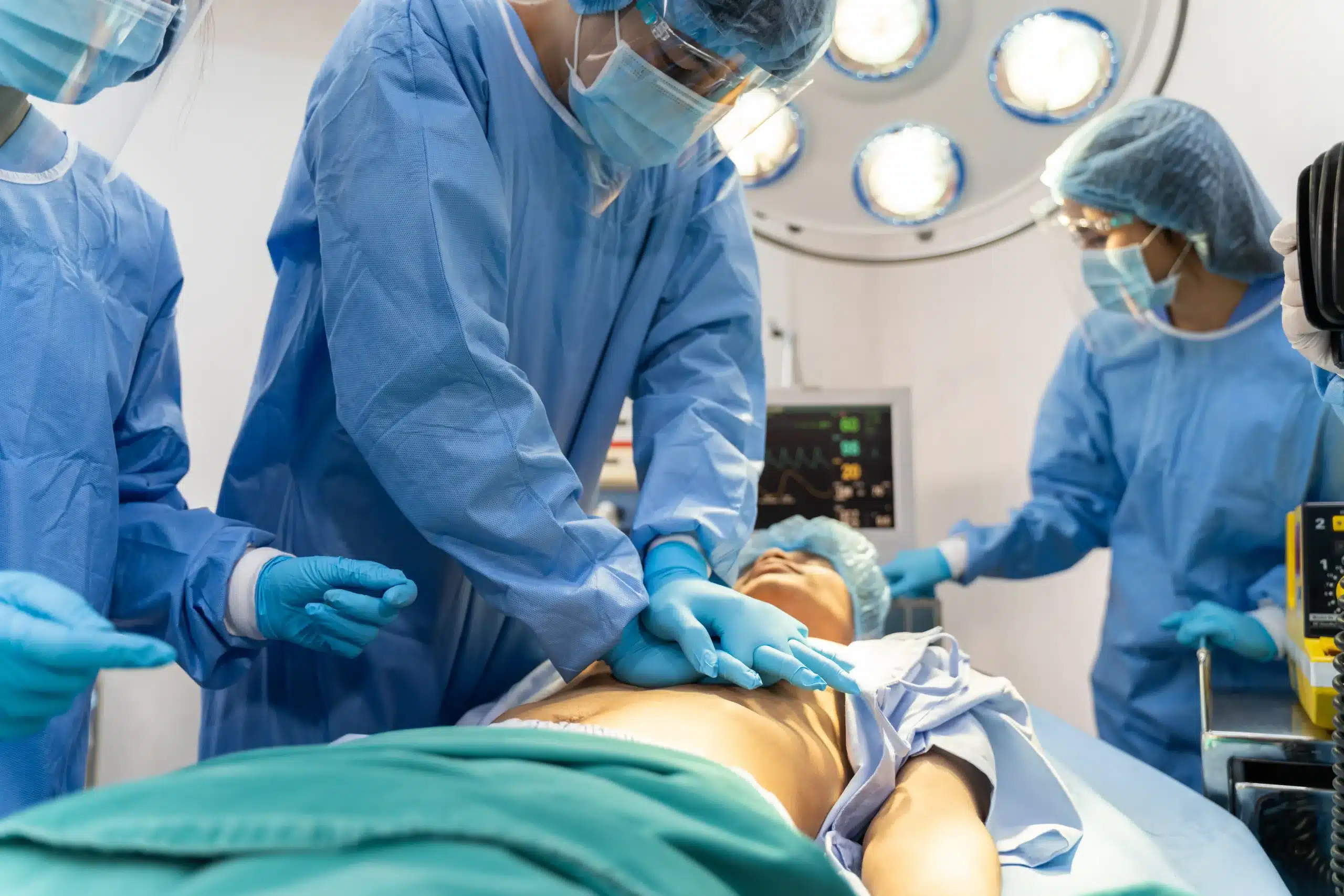Your BLS certification is about more than just meeting job requirements; it’s about being equipped to save a life. Whether you’re a seasoned medical professional, a childcare provider, or simply someone who wants to be prepared, keeping your BLS skills current is essential. But finding the time and the right course can be tricky. This guide simplifies the BLS recertification process, helping you find “bls recertification near me” and offering practical advice for preparing for your renewal. We’ll cover everything from understanding the core skills and guidelines to choosing the best recertification format for your learning style and schedule. Let’s ensure you’re ready to respond confidently and effectively in any emergency.
Key Takeaways
- Stay current with your lifesaving skills through BLS recertification. Regular training ensures you’re prepared and confident in providing emergency care.
- Select a reputable provider offering accredited courses and experienced instructors. This guarantees high-quality training that meets industry standards and best practices.
- Prepare for recertification by reviewing prior course materials and understanding the renewal process. This proactive approach streamlines the process and reinforces essential skills.
What is BLS Recertification?
BLS certification is essential for many healthcare professionals and others who need emergency care skills, like lifeguards and fitness instructors. Your BLS certification, you’ll need to complete a recertification course and pass an exam. This process ensures you’re up-to-date on the latest life-saving techniques.
Key Skills You’ll Refresh
A BLS recertification course covers essential skills and knowledge. You’ll review the Chain of Survival and practice 1- and 2-rescuer CPR. The course also covers AED use for adults, children, and infants, highlighting the differences in rescue techniques for each age group. Additionally, you’ll refresh your skills in bag-mask techniques, rescue breathing, and relieving choking. These refreshed skills empower you to respond effectively in various emergency situations.
Stay Current with Guidelines
Medical practices and guidelines are always evolving. BLS recertification ensures your training aligns with the most recent American Heart Association standards. Staying current with these guidelines is crucial for providing the most effective care and improving patient outcomes. The Red Cross also emphasizes up-to-date medical information and techniques in its BLS training, focusing on critical thinking and teamwork.
Why BLS Recertification is Important
BLS recertification is more than just a checkbox; it’s a critical step in maintaining your ability to provide effective, lifesaving care. Whether you’re a seasoned healthcare professional or someone who wants to be prepared for emergencies, staying current with your BLS skills is essential.
Maintain Lifesaving Skills
Regular BLS recertification ensures your skills are sharp and up-to-date. The guidelines for CPR and other lifesaving techniques can change, and recertification keeps you informed about the latest best practices. As the World Health Organization (WHO) emphasizes, immediate, high-quality basic life support (BLS) is crucial for survival, and adhering to evidence-based guidelines leads to better patient outcomes. Recertification reinforces these essential skills, allowing you to respond effectively in critical situations.
Meet Professional Requirements
Many healthcare professions require BLS certification. Recertification demonstrates your ongoing commitment to maintaining these crucial skills and adhering to professional standards. It’s not just about checking a box; it’s about ensuring you’re prepared to deliver the best possible care. American Health Training points out that BLS certification is a crucial credential for healthcare professionals. Staying certified keeps your qualifications current and allows you to continue practicing in your field.
Build Confidence in Emergencies
Knowing you have the most current BLS skills can significantly boost your confidence in responding to emergencies. This confidence can be the difference between hesitating and taking decisive, lifesaving action. Research explored the impact of basic life-support training on healthcare providers and showed that training positively influences their willingness to perform CPR and use AEDs. Regular recertification reinforces this confidence, empowering you to act quickly and effectively when every second counts.
Find BLS Recertification Courses Near You
Need to renew your BLS certification? You have several convenient options, from in-person classes to online courses. Let’s explore some of the most common places to find BLS recertification.
Safety Training Seminars
Organizations like Safety Training Seminars offer a range of courses, including BLS recertification, often designed for healthcare providers. They focus on keeping participants current with the latest guidelines and techniques. Safety Training Seminars offers BLS, ACLS, and PALS courses in over 60 locations across Northern California. Their San Francisco location serves San Francisco, Daly City, San Mateo, and Oakland, CA. They are known for their excellent customer service and a low price guarantee.
American Red Cross
The American Red Cross is a well-known provider of BLS renewal and recertification courses. These courses cover essential life-saving skills and typically extend your certification for two years.
American Heart Association
The American Heart Association (AHA) offers BLS recertification courses designed for various healthcare settings. These courses ensure you’re proficient in CPR and other critical skills. You can find a course near you on the AHA website.
Local Hospitals and Medical Centers
Many hospitals and medical centers provide BLS recertification courses, often tailored to their staff’s needs and schedules. Check with your employer or local hospitals to see what they offer. These courses are a convenient option for healthcare professionals looking to meet institutional requirements.
Community Colleges
Community colleges frequently offer affordable BLS recertification courses, making them accessible to a broader audience, including students and professionals. The American Heart Association provides guidance on BLS training for healthcare providers.
Online Providers
For those with busy schedules, online BLS recertification courses offer flexibility. You can complete the coursework at your own pace, making it easier to fit into your life. Just be sure to choose a reputable provider that meets AHA guidelines. Make sure to research the provider and confirm that the online course will meet your recertification needs.
Compare Online and In-Person BLS Recertification
Deciding how to recertify your BLS skills? Both online and in-person courses offer unique advantages. Understanding these differences can help you choose the best fit for your learning style and schedule.
Online Course Pros and Cons
Online BLS recertification offers incredible flexibility. Busy healthcare professionals, parents, and anyone with a packed schedule can study at their own pace and revisit materials as needed. This format is perfect for those who prefer self-directed learning and want to squeeze in training during pockets of free time. Online courses also offer a convenient way to stay updated on the latest BLS practices and guidelines, directly addressing common challenges in BLS renewal. However, online courses may not provide the same level of hands-on practice as in-person training.
Benefits of In-Person Training
In-person BLS renewal courses emphasize hands-on learning. You’ll practice essential skills with instructors providing real-time feedback. This immersive experience helps build muscle memory and confidence, ensuring you’re fully prepared to respond effectively in a real-life emergency. The interactive nature of in-person training also allows for immediate clarification of questions and deeper engagement with the material. This hands-on practice is crucial for mastering BLS skills.
Choose the Right Format
Ultimately, the best BLS recertification format depends on your individual needs. Consider your learning style, schedule, and access to resources. If you thrive in a structured environment with direct interaction, in-person training might be a better fit. If you need flexibility and prefer self-paced learning, an online course could be ideal. Evaluate your own preferences and workplace requirements when making your decision. Both online and in-person renewal options offer distinct advantages; choosing the right one ensures you gain the most from your recertification experience. For those in the San Francisco Bay Area, Safety Training Seminars offers a variety of options to suit your needs.
Understand BLS Recertification Costs
Knowing the typical costs associated with BLS recertification helps you budget effectively and find the best value. Let’s break down the typical price range, factors influencing cost, and potential discounts.
Typical Price Range
BLS recertification courses typically range from $50 to $80. For example, in Los Angeles, the AHA BLS Recertification course is around $55, with the textbook costing an additional $20–$25. Remember that prices can vary based on location, the training provider, and whether you opt for an online or in-person class. Always confirm the total cost with the provider before registering. At Safety Training Seminars, we offer a low price guarantee on all our courses, including BLS recertification.
Factors Affecting Cost
Several factors can influence the overall cost of your BLS recertification. In-person courses sometimes include extras like printed materials or access to training equipment, which can impact the price. Online courses may offer more flexibility and lower overhead, often resulting in a lower price tag. While cost is a consideration, remember that maintaining your BLS certification provides significant long-term benefits and is a worthwhile investment in your skills. Whether you’re a healthcare professional, lifeguard, or fitness instructor, having current emergency care skills is essential. Our BLS recertification courses cover all the essential skills and knowledge you need to respond confidently in an emergency.
Discounts and Deals
Look for potential discounts or deals that can make your recertification more affordable. Some providers offer discounts for bundling courses, such as combining ACLS and PALS recertification with BLS. You might also find discounts through professional organizations or employers. Keep an eye out for promotions or coupon codes, which can sometimes offer significant savings. Taking the time to research and compare options can help you find the most cost-effective way to renew your BLS certification. Contact us today to learn more about our current course offerings and any available discounts.
Choose a Reputable BLS Recertification Provider
Finding the right BLS recertification provider is crucial for receiving high-quality training that meets industry standards. Here’s what to consider:
Accreditation and Recognition
Ensure your chosen provider holds recognized accreditation from a respected organization like the American Heart Association (AHA). This accreditation validates the program’s adherence to evidence-based guidelines and best practices, ultimately contributing to improved patient outcomes. Safety Training Seminars offers AHA-certified BLS courses, ensuring your recertification aligns with the latest medical knowledge.
Instructor Qualifications
Experienced and certified instructors are essential for effective BLS training. Look for providers whose instructors have extensive healthcare backgrounds and current certifications. Studies show that instructors with more training experience often create a positive learning environment and reduce anxiety surrounding CPR and AED use. This can significantly impact your confidence and skill retention. Safety Training Seminars prioritizes experienced instructors committed to providing high-quality training.
Course Content and Materials
A comprehensive BLS recertification course should cover core skills such as CPR, AED use, and airway management. The course materials should be up-to-date and aligned with current guidelines. A thorough review of the course content beforehand ensures you’re refreshing the essential knowledge and skills needed to respond effectively in emergencies. Check if the provider offers practice scenarios and hands-on training to solidify your learning.
Student Reviews
Reading reviews from past students offers valuable insights into a provider’s reputation and training quality. Look for feedback on the instructors, course materials, and overall learning experience. Positive reviews often indicate a provider’s commitment to student success. Consistent, high-quality training is paramount for maintaining proficiency in these lifesaving skills, as highlighted in this article. Student feedback can help you identify providers who prioritize practical application and adherence to established protocols. Consider checking online reviews or asking for recommendations from colleagues.
Enroll in Your BLS Recertification Course
Once you’ve found a course that works for you, it’s time to enroll. Here’s what to expect during registration:
Steps to Register
Registering for BLS recertification is usually simple. Many providers, including Safety Training Seminars, offer convenient online registration. Just select your preferred date and location, and you’ll likely create an account to manage your certifications and course history. Some providers may also allow registration by phone or in person.
Required Documentation
Before class, make sure you have the required paperwork. You’ll need to bring your current or recently expired BLS Provider card as proof of previous certification. Most providers ask that your prior card be valid within the past 30 days to ensure you’re eligible for recertification. This also helps maintain the quality of training. If you have questions about accepted documentation, reach out to your chosen provider. Safety Training Seminars lists its requirements on its FAQ page.
Course Duration and Time Commitment
BLS recertification courses refresh your essential skills efficiently. Plan for about two and a half to four and a half hours in class, depending on the format and material. Your new BLS certification will be valid for two years, so make a note to stay current.
Prepare for BLS Recertification Success
Getting ready for your BLS recertification doesn’t have to be stressful. With a little preparation, you can walk into the exam room feeling confident and ready to succeed. Here’s how to make your recertification process as smooth as possible:
Review Previous Materials
One of the biggest hurdles people face when renewing their BLS certification is staying up-to-date with the latest guidelines and procedures. Changes happen periodically, so reviewing your previous BLS course materials is essential. Brushing up on the core concepts, like the Chain of Survival, will make the recertification course much easier to grasp. This refresher will also help you identify any areas where you might need extra focus.
What to Expect
BLS certification is valid for two years, and there’s no grace period after it expires. This means you’ll need to be proactive about scheduling your BLS recertification course and exam. The renewal process involves completing the course and passing the exam, just like the initial certification. The course covers key changes from previous American Heart Association guidelines, including essential skills like one- and two-rescuer CPR and AED use for adults, children, and infants. Knowing this ahead of time lets you tailor your study efforts effectively.
Tips for Mastering Skills
A few common mistakes can trip people up during BLS recertification. Missing deadlines, neglecting continuing education requirements, and providing inaccurate information during registration can all cause unnecessary delays. Avoid these pitfalls by marking your renewal date on your calendar and double-checking all the requirements beforehand. The best tip? Renew your BLS certification before it expires. This proactive approach saves you time and keeps your skills sharp, often allowing you to take a shorter refresher course rather than the full course again.
Related Articles
- BLS Renewal in SF: Your Easy Recertification Guide – San Francisco CPR Classes
- BLS Courses in SF: Your Guide to Getting Certified – San Francisco CPR Classes
- ACLS Renewal in SF: Your Complete Guide – San Francisco CPR Classes
- BLS HeartCode San Francisco: Your Certification Guide – San Francisco CPR Classes
Frequently Asked Questions
How long is my BLS certification valid? BLS certification is valid for two years from the date of issue. There’s no grace period, so it’s essential to recertify before your current certification expires.
What does a BLS recertification course cover? BLS recertification courses cover core life-saving skills, including CPR for adults, children, and infants, AED use, and relief of choking. You’ll also review the Chain of Survival and learn the latest techniques based on the most recent American Heart Association guidelines.
Where can I find BLS recertification courses? Several organizations offer BLS recertification courses, including Safety Training Seminars, the American Red Cross, the American Heart Association, local hospitals, community colleges, and online providers. Safety Training Seminars offers courses in over 60 locations across Northern California, with a location conveniently serving San Francisco, Daly City, San Mateo, and Oakland.
What’s the difference between online and in-person BLS recertification? Online courses offer flexibility, allowing you to learn at your own pace. In-person classes provide hands-on practice and direct interaction with instructors. Both formats cover the same core material and lead to the same certification. The best choice depends on your learning style and schedule.
How much does BLS recertification cost? BLS recertification typically costs between $50 and $80. The price can vary depending on the provider, location, and course format. Some providers offer discounts for bundling courses or for members of professional organizations. Safety Training Seminars offers a low price guarantee on all its courses.


